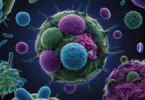By Helena
Guest writer for Wake Up World
The psychological effects of trauma and violence have long been known, and in the mid 20th century the symptoms were defined as post traumatic stress disorder.
Some people develop PTSD after going through a traumatic event such as war, natural disaster or sexual assault. PTSD can be debilitating for people who suffer from it.
PTSD sufferers often find relief in cannabis. There is a correlation between PTSD and cannabis use, but is it a positive one?
Most of the research on marijuana and PTSD has focused on substance abuse, but some studies have explored the substantial medical benefits of using cannabis for treating PTSD.
Bonus: Download a free dosage guide that will show you the exact step-by-step process Dr. Dustin Sulak used to successfully treat more than 18,000 patients with cannabis.
[pro_ad_display_adzone id=”110028″]
PTSD symptoms and conventional treatments
Post traumatic stress disorder, or PTSD, is an often overwhelming condition that can lead to other serious health consequences.
People can develop PTSD at any point in their life. Events that can trigger PTSD in some people include war, natural disasters, sexual assault, traffic accidents, witnessing or experiencing violence or serious injury, or the unexpected death of someone we love.
What’s particularly surprising is that Canada has one of the highest PTSD rates in the world – one study found that 9.2% of Canadians will suffer from PTSD in their lifetime.
The symptoms of PTSD can be divided into three groups:
- Re-experiencing the traumatic event — for example, having bad dreams, memories and thoughts of the traumatic event, excessive reactions to reminders, even re-experiencing the trauma in a physical way when reminders trigger the body to react.
- Hyperarousal — an aroused emotional state with heightened anxiety and tension which can cause sleeping problems, difficulties concentrating, alterations in thinking and feeling, even aggressive and self-destructive behavior. Patients can also become hypersensitive to everyday situations, can feel angry and easily irritated, and feel constantly on alert.
- Avoidance — usually described as emotional numbness, which leads to losing interest in everyday life, activities, and people, along with depression and withdrawal. Sufferers also avoid thinking or talking about the traumatic event.
Symptoms can occur individually or in combination, and usually begin soon after the traumatic event.
The condition can last for many years, especially if left untreated. Anger management issues and depression are just two of the difficulties patients with PTSD have to deal with on daily basis.
When it comes to treating complex disorders such as this one, recovery can take a long time especially since there is no specific medication designed to treat it.
The first step in conventional medicine is psychotherapy and, if needed, antidepressants and anxyiolitics.
Some patients can find relief with just one type of therapy, but unfortunately, many struggle to achieve significant long-term relief from their symptoms.
Which brings me to my point: PTSD is usually treated with cognitive behavioral therapy, so recovery can take a long time. It’s no surprise that PTSD patients all around the world use a substance that makes them feel calmer, lowers their anxiety, and helps quiet bad memories. That substance is cannabis.
Can pot help treat the symptoms of PTSD?
Up until recently, everything we knew about marijuana and PTSD was based on studies about substance abuse. People with PTSD have high rates of addiction and substance abuse, including cannabis.
However, recent studies have observed PTSD patients who use cannabis to relieve their symptoms. Those results are so promising that they are slowly changing the way PTSD is treated.
One of those studies was conducted by a researcher with the Canadian Forces Health Services Operational Trauma and Stress Support Centre in Ottawa.
In that test, 47 former soldiers and PTSD patients were observed during a two-year period while they were using Nabilone, a synthetic medical cannabinoid (similar to THC) mostly used for treating vomiting and nausea caused by cancer chemotherapy.
As many as 72% of patients said they slept better with fewer nightmares and had fewer flashbacks during the day.
In fact, some of the ex-soldiers said they stopped having bad dreams about the past event or had noticed the lack of other symptoms, like flashbacks and vigilance. (1)
It has been theorized that cannabinoids can relieve chronic symptoms of PTSD by filling in the gaps caused by an underlying endocannabinoid deficiency. Some researchers believe that cannabis could be the “salvation” for military veterans who do not respond well to conventional therapeutic treatment and medications.
One of the largest studies on this topic was conducted and published in 2015 by the New Mexico Medical Cannabis Program, although the study didn’t include a placebo-controlled group which is crucial for this type of research.
The study collected psychiatric evaluations of 80 PTSD patients who used medical marijuana as part of their therapy, the conclusion found that 75% of patients reported a reduction in symptoms. (2)
Which cannabinoid is best for PTSD — CBD or THC?
The answer to this question lies in a 2012 study, where researchers from the Federal University of Santa Catarina in Brazil exposed rodents to mild electric foot shocks to establish a fear memory that would be reactivated whenever they were placed in a similar environment.
Afterwards, the rodents were injected with CBD and placed again in that environment. The animals showed less fear behavior if they received CBD shortly after the electrical trauma. (3)
These findings lead us to believe that CBD treatment may help diminish traumatic flashback memories that PTSD patients often experience.
However, further clinical research on human subjects is needed.
As noted in some trials, not all PTSD patients respond well to cannabis. During the studies, some patients experienced an increase in paranoid feelings and even an increase in their symptoms. This is probably due to the fact that cannabis often produces biphasic effects — in low doses THC relieves stress while in high doses it can promote it.
In 2016, the US DEA approved the first-ever clinical research of the whole cannabis plant for treating PTSD. The study, financed by the state of Colorado, will test cannabis use (especially smoking) with varying ratios of THC and CBD. If you’re suffering from PTSD, you can apply for this study here: www.wecanstudy.org
[pro_ad_display_adzone id=”110030″]
The 10 best strains for PTSD:
There are two types of cannabis strains: sativa and indica.
Generally speaking, sativa strains are more energizing and uplifting, great for use during the day. Indicas are more relaxing and sedative and are usually recommended for nighttime use when you feel like just chilling and watching a movie.
There are two major cannabinoids in cannabis plants: THC and CBD.
THC is the psychoactive substance of weed, it’s the reason why pot makes us high. CBD is not psychoactive and it diminishes the effects produced by THC. CBD is mainly used by users who’d rather stay clear-headed and alert.
One way to find the perfect strain is by using Strainblazer. This tool allows you to filter through more than 400 strains currently on sale in Canada by answering a few quick questions.
Without any further ado, here is our list of the 10 best strains for PTSD:
Pennywise (THC 14%, CBD 14%)
As a high CBD strain, Pennywise has mild psychoactive effects which make it perfect for many conditions and symptoms: PTSD, neurological disorders and epilepsy in particular. It improves mental clarity, uplifts mood and relaxes the whole body.
Pineapple Express (THC 25%, CBD 1%)
Despite its high THC content, Pineapple Express is a well-balanced sativa that provides a clear head and an energetic buzz. I bet you’ll fall in love with this strain for its rich fruity taste and smell. Superb for daytime use for PTSD patients, it boosts feelings of creativity and provides the focus needed for daily activities.
CBD Shark (THC 6%, CBD 6%)
With a 1:1 THC to CBD ratio, this indica dominant strain has it all. It relieves anxiety, pain and other PTSD symptoms, with no psychoactive effects. CBD shark has a skunky but pleasantly sweet and herbal taste. You can expect a slight body relaxation, but you’ll be energized enough to get things done.
Blue Dream (THC 20%, CBD 2%)
Absolutely one of the most popular medical strains, Blue Dream is particularly effective in beating anxiety and depression, the most prevalent symptoms of PTSD. Because of the high THC levels, with a little bit of CBD, this strain will make social interactions as smooth as possible.
Super Silver Haze (THC 23%, CBD 0.3%)
One of the most popular and accessible strains in the world, you will likely find Super Silver Haze in a dispensary in your area. It has it all— it creates feelings of happiness and has energizing effects. An overall great daytime strain.
Amnesia Haze (THC 16%, CBD 0.5%)
As its name says, Amnesia Haze will help you forget your everyday worries and make you feel relaxed and calm. It provides a happy high which is why it’s an excellent choice for PTSD patients. However, if THC triggers paranoia in you, it’s better to avoid it and try another strain from the list.
Master Kush (THC 18%, CBD 1%)
A very popular and potent medical strain, Master Kush is sedative and appropriate for nighttime use. When you get back home from a hard day at work, light up some Master Kush to help you relieve pain and relax.
Harlequin (THC 6%, CBD 16%)
Since there is a balanced amount of THC and CBD in this strain, you don’t have to worry about marijuana-induced paranoia. Harlequin is simply one of the favorite strains among PTSD patients. It will make you relaxed but not sleepy, making it suitable for everyday use.
OG Kush (THC 22%, CBD 0.3%)
OG Kush is a very accessible strain and is effective in treating stress, depression and insomnia. This strain provides a full body relaxation, but also with a pinch of euphoria that is pleasant for some people. If you’d rather not feel euphoric at all, skip this strain as well.
Headband (THC 23%, 0.2%)
This strain will make you feel like you’re wearing a headband the first time you try it, which is where it got its name. Headband helps patients fight pain and both psychological and physical stress.
To summarize
Cannabis is recognized as a valid PTSD treatment in Canada and in some US states.
Since substance abuse is very common for PTSD patients, it’s important to be monitored by a physician and to take things slowly.
PTSD is not something that can be treated instantly. It can takes a lot of hard work and patience, but with the right support and the right strain, there is certainly hope.
References:
- Fraser GA, The Use of a Synthetic Cannabinoid in the Management of Treatment?Resistant Nightmares in Posttraumatic Stress Disorder (PTSD); CNS Neuroscience and Therapeutics; 2009; 15(1):84-8. https://www.ncbi.nlm.nih.gov/pubmed/19228182
- Greer GR, Grob CS, Halberstadt AL; PTSD symptom reports of patients evaluated for the New Mexico Medical Cannabis Program; Journal of Psychoactive Drugs; 2014; 46(1):73-7. https://www.ncbi.nlm.nih.gov/pubmed/24830188
- Stern CA, Gazarini L, Takahashi RN, Guimarães FS, Bertoglio LJ; On Disruption of Fear Memory by Reconsolidation Blockade: Evidence from Cannabidiol Treatment; Neuropsychopharmacology; August 2012; 37(9): 2132–2142. https://www.ncbi.nlm.nih.gov/pmc/articles/PMC3398715
About the author:







